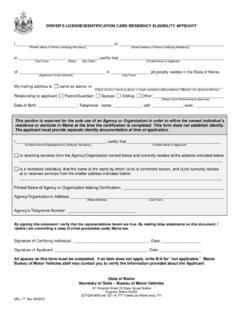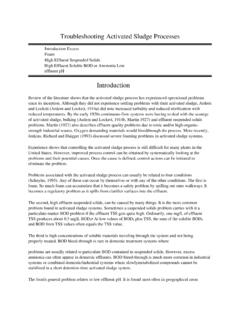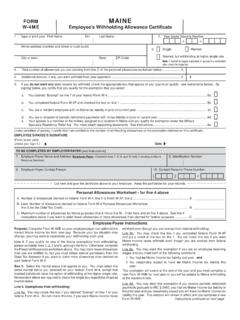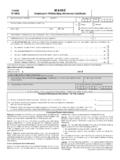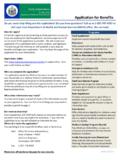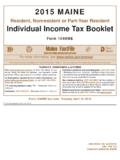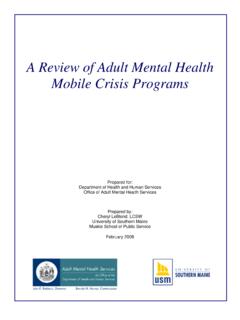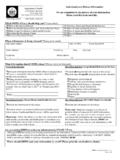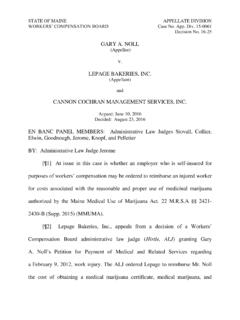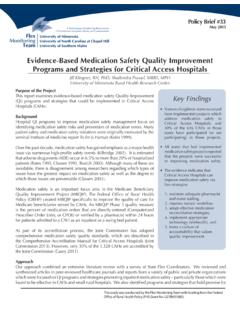Transcription of RESIDENCE: RURAL and URBAN - Maine
1 residence : RURAL and URBAN . NATIONALLY, WE KNOW: Twenty percent (20%) of Americans live in RURAL areas, defined as places with fewer than 2,500 residents. Although some health disparities between RURAL and URBAN residents may be a direct result of the inherent structur- al differences of a RURAL area, some are clearly the result of a complex interaction among structural, cultural, and economic differences. Poverty is higher in RURAL areas. Fourteen percent (14%) of RURAL Americans lived in poverty compared to 11% of URBAN Americans in 1999 (Census). RURAL residents have fewer health care providers per capita and increased transportation barriers.
2 For example, only 9% of the nation's physicians practice in RURAL areas, even though 20% of the population lives there. There especially appears to be a short- age of dentists in RURAL areas compared to URBAN areas. David Hartley, PhD, MHA, Chair, Master's Program in Health Policy and Management, Edmund S. Muskie School of Public Service, University of Southern Maine One of the biggest challenges for improving health of RURAL Mainers is to begin to understand the underlying cultural issues that lead to unhealthy behaviors and develop culturally appropriate initiatives to change them. These will quite likely be different from one community to the next.
3 A second challenge is to begin to effect a change in the med- ical community toward a population perspective that acknowl- edges these cultural factors and takes them on, helping every primary care practitioner to accept responsibility for popula- tion health.. A third challenge, and perhaps the most difficult, is to distribute responsibility for population health across a broader spectrum of the leadership of RURAL communities by means of multi-sector partnerships. The business community, schools, municipal government, and the citizenry must recognize that economic health, social health, and physical health are intimately related, and that the future welfare of each RURAL community depends on an integrated, collaborative effort across all the factors that make for a healthy RURAL community.
4 The health of RURAL Mainers is directly connected to the health of RURAL Maine communities.. PAG E 57. residence : RURAL And URBAN critical access hospital Program ( Maine RURAL hospital Flexibility Program). This Federally-funded program, administered by the Maine Department of Human Services' Bureaus of Health and Medical Services, allows RURAL hospitals to convert to cost-based reimbursements under Medicare and Medicaid (MaineCare). In exchange, the hospital agrees to continue 24-hour emergency services and provide appropriate staff, but to limit the number of inpatient acute care beds (15 acute care beds and 10 swing beds for a total of 25 licensed beds).
5 This program was created in 1997 by Congress to address the problem that many of our country's RURAL hospitals serve a higher proportion of elders and low income people and, therefore, are often more highly dependent on Medicare and Medicaid funds. As of August 2002, seven Maine hospitals have converted to CAH license: Blue Hill hospital CA Dean hospital in Greenville Calais Regional hospital Mount Desert Island hospital in Bar Harbor Penobscot Valley hospital in Lincoln Rumford hospital St. Andrews hospital in Boothbay Harbor Because there are fewer specialists in RURAL areas, primary care providers (such as family physicians, pediatricians, internists, nurse practitioners, and physician assistants) tend to be utilized much more frequently for specialty-type care such as treating mental disorders, orthopedic, and cardiac illnesses.
6 Rates of health insurance are lower in RURAL areas than URBAN . access to emergency services and the availability of specialty care are challenges in RURAL areas. People living in inner-city areas often lack access to health care because of a shortage of primary care providers, cultural barriers, lack of health insurance, and lack of awareness of available health services and how to access them. RURAL residents visit a physician less often and later in the course of an illness than their URBAN counterparts. Preventive screening rates (such as mammograms, cholesterol, blood pressure checks), physical activity rates, and safety belt usage are lower in RURAL than in URBAN areas.
7 However, it appears that leisure-time physical activity rates are higher (by 20%) in RURAL areas of the Northeast than their URBAN counterparts. Tobacco addiction rates are higher in RURAL areas versus URBAN and URBAN fringe areas. Injury-related deaths are 40% higher in RURAL populations than URBAN . Deaths from suicide are at higher rates in RURAL areas than URBAN . Heart disease, cancer, and diabetes rates are higher in RURAL areas than URBAN . Limitation in activity due to chronic health conditions among adults is more common in RURAL areas than URBAN . PAG E 58. Healthy Maine 2010: Opportunities for All Some of our country's highest death rates, including the highest infant mortality rates, are found in our most RURAL areas.
8 People who live in the most RURAL areas (fewer than 10,000 people) and inner-city areas share several factors in common: higher rates of poverty, mortality, and poorer health status than their suburban counterparts. ( URBAN and RURAL Health Chartbook, National Center for Health Statistics, 2001.). IN Maine , WE KNOW: Percent Of Population Living In RURAL Areas (Using Census Bureau Definition Of RURAL Areas As Counties Maine ranks 38th nationally in population density. Designated Nonmetropolitan). According to the 1990 Census, Maine , along with Vermont US Maine and West Virginia, were the states with the highest propor- 1900 60% 67%.
9 Tion of population classified as RURAL . 1990 25% 55%. Forty percent of Maine 's population lives in three counties 2000 20% 60%. Cumberland, Penobscot, and Androscoggin which are all Source: US Census. designated as metropolitan counties by the US Census Bureau. However, all three of these counties include a wide variety of demographics from densely populated cities (Portland, Bangor, and Lewiston-Auburn) to suburban areas to sparsely populated communities, with profiles more fitting of RURAL areas. RURAL counties tend to have older populations. For instance, people 65 years and older comprise 13 14% of the population in Cumberland, Androscoggin, and Penobscot Counties, whereas they comprise 17% of the popula- tions of Aroostook, Piscataquis, and Washington Counties.
10 RURAL counties in Maine tend to have higher rates of poverty and lower median incomes. For instance, Cumberland, Androscoggin, and Penobscot Counties have 8 12% of their population living in poverty and median household incomes ranging from about $36,000 to $41,000. By contrast, Aroostook, Piscataquis, and Washington Counties have 14 18% of their population living in poverty and median household incomes ranging from about $25,000 to $29,000. Ethnic and racial minority populations vary between RURAL and URBAN counties in Maine . For instance, black and Asian populations tend to account for most racial minority populations in Cumberland and Androscoggin Counties.
